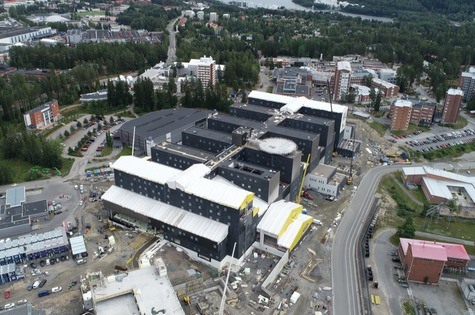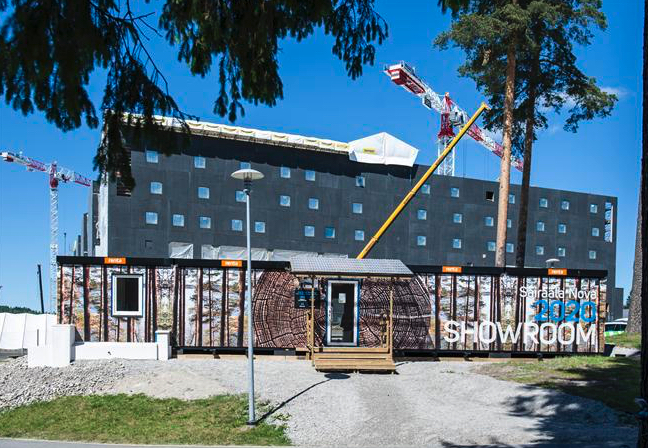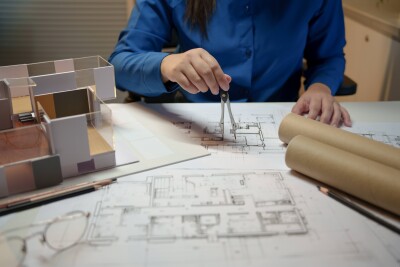Hospital Nova is set to be the first completely new hospital to be built in the Central Finland Healthcare district since the 1970s. Starting completely anew allowed for the building of a more modern and efficient hospital – with a lofty goal of cutting hospital operating costs by 10% when compared to more traditional hospitals. To meet this goal, designers needed to not only use innovative processes for the build, but involve hospital staff to make sure that the new facility would meet their specific needs.
A project of this scale is a perfect use case for BIM, where the project could be fully modeled and examined before an ounce of concrete was poured or a single shovelful of dirt was removed from the site. To bring more stakeholders into the process, however, required some new solutions.
The team working on Hospital Nova had a unique need: to be able to create virtual models for review, but also to be able to quickly update them as changes were made. Hospital Nova utilized Tridify to convert the original architect-generated BIMs into interactive 3D models. Alexander Le Belle, Tridify CEO, emphasized the importance of getting visualizations to external stakeholders.
“By making models more easily accessible without specialist software, hardware or physical meetings to view them, new workflows are being created and it also means BIMs can be viewed by wider, non-technical audiences and add value outside their traditional realm. “
The team built a VR “hospital demonstration space” adjacent to the construction site open to both staff and the public to visit. There, interested people could put on VR headsets to explore the hospital, and others could follow the virtual experience on a projected screen.

The interior of the hospital virtual ‘showroom.’
The response from hospital staff was impressive, with over 350 registering to be involved in the design process, and many using the virtual models. At its height, there were several visitor groups per day including members of the public interested in seeing what the hospital would look like.
In 2019 the demonstration area saw over 3,000 visitors to the virtual showroom. The low barrier to entry allowed this hospital’s project team to operate the demonstration space without external specialists, and some also used the virtual model to create their own videos or images for use in other outreach activities. Project Director of Hospital Nova, Mikko Jylhä, explained the virtual space’s value to the community.
“Our objective was to engage hospital staff in the project before construction had even started, by allowing them to visit the building virtually. Right from the early stages we wanted to share the new designs, collaborate with the building’s future users and gather vital feedback for the design process.”
“Many different staff groups were involved, ranging from clinical staff, consultants, doctors, nurses and laboratory staff,” explained Jylhä. “Gathering feedback from so many different groups who would be using the building was invaluable in helping shape its design. Changes were made to the architect plans based on feedback. The result being an improved hospital which avoids any expensive alterations once the hospital is complete.”

An aerial view of Nova Hospital under construction
With construction now in its final stages and a planned opening in late 2020, the virtual model is currently being used by staff to test the hospital signage and ensure the smooth flow of different users around the site. Staff are also using the space to become familiar with the new premises even before entering the building.
To La Belle, this type of outcome also demonstrates the benefit in leveraging technology in new ways.
“Many organisations we’ve been talking to already recognise the benefits of digital tools and how they can improve collaboration and streamline certain processes. The current crisis is forcing some to adapt more quickly, using technology to support new working practices. Any benefits achieved from new streamlined workflows will also obviously be there in the future too.”
“As the situation continues, the newly adopted methods are more likely to become permanent ways of sharing and collaborating. You don’t need to go into an office to review a 3D BIM model any more – anyone can view them where-ever they may be.”
At present, Hospital Nova is starting to use Tridify to publish the 3D model to mobile devices via the web, to help communicate the design to additional stakeholders. The hospital is also planning on using the virtual model throughout the hospital’s lifecycle in facilities management.
“Using virtual reality for hospital co-design on this scale is rare so we are proud to be at the forefront of such developments, seeing how it can help shape the hospital so it functions as efficiently as possible, for both staff and patients. An efficient design is critical as it helps guarantee the delivery of the best quality and economically efficient healthcare in years to come,” concluded Jylhä.






